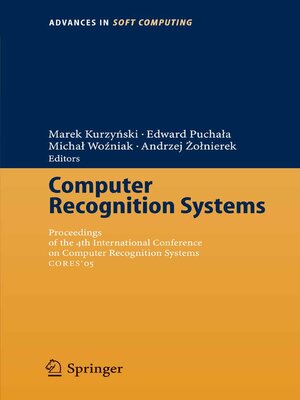Computer Recognition Systems
ebook ∣ Proceedings of 4th International Conference on Computer Recognition Systems CORES'05 · Advances in Intelligent and Soft Computing
By Marek Kurzynski

Sign up to save your library
With an OverDrive account, you can save your favorite libraries for at-a-glance information about availability. Find out more about OverDrive accounts.
Find this title in Libby, the library reading app by OverDrive.



Search for a digital library with this title
Title found at these libraries:
| Library Name | Distance |
|---|---|
| Loading... |
th This book contains papers accepted for presentation at the 4 International Conference on Computer Recognition Systems CORES'05, May 22-25, 2005, Rydzyna Castle (Poland), This conference is a continuation of a series of con ferences on similar topics (KOSYR) organized each second year, since 1999, by the Chair of Systems and Computer Networks, Wroclaw University of Tech nology. An increasing interest to those conferences paid not only by home but also by foreign participants inspired the organizers to transform them into conferences of international range. Our expectations that the community of specialists in computer recognizing systems will find CORES'05 a proper form of maintaining the tradition of the former conferences have been confirmed by a large number of submitted papers. Alas, organizational constraints caused a necessity to narrow the acceptance criteria so that only 100 papers have been finally included into the conference program. The area covered by accepted papers is still very large and it shows how vivacious is scientific activity in the domain of computer recognition methods and systems. It contains vari ous theoretical approaches to the recognition problem based on mathematical statistics, fuzzy sets, morphological methods, wavelets, syntactic methods, genetic algorithms, artificial neural networks, ontological models, etc. Most attention is still paid to visual objects recognition; however, acoustic, tex tual and other objects are also considered. Among application areas medical problems are in majority; recognition of faces, speech signals and textual in formation processing methods being also investigated.







